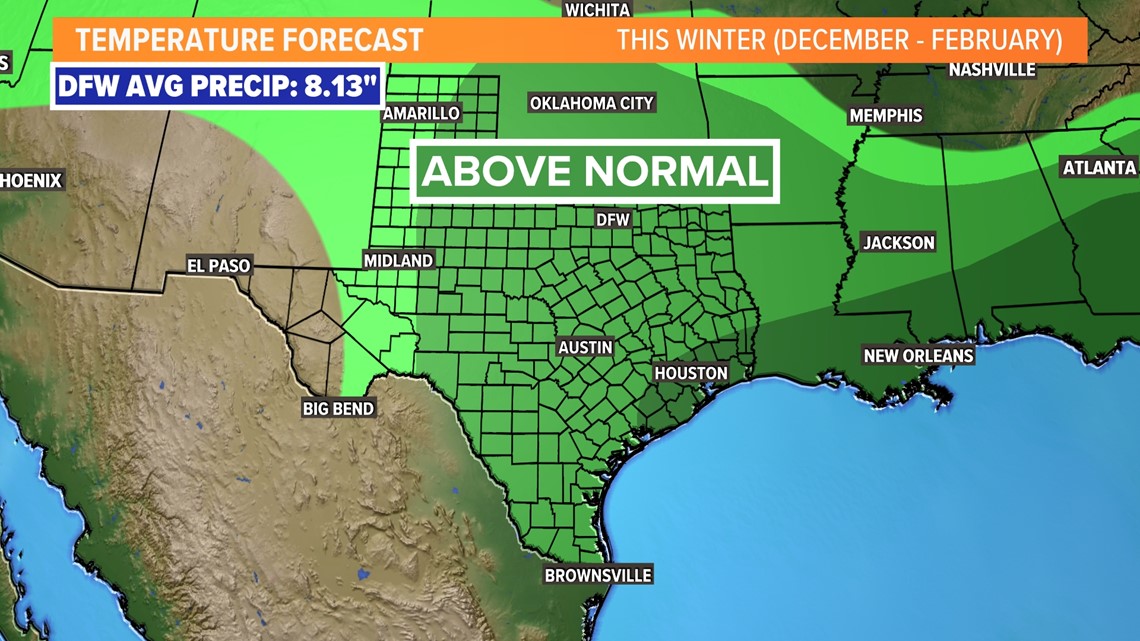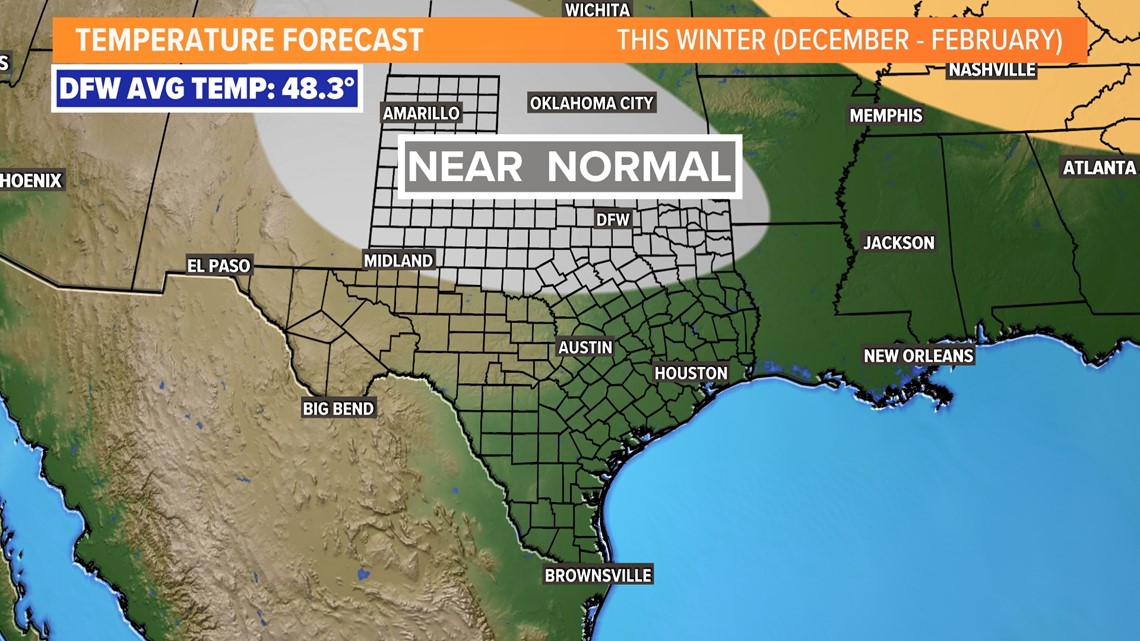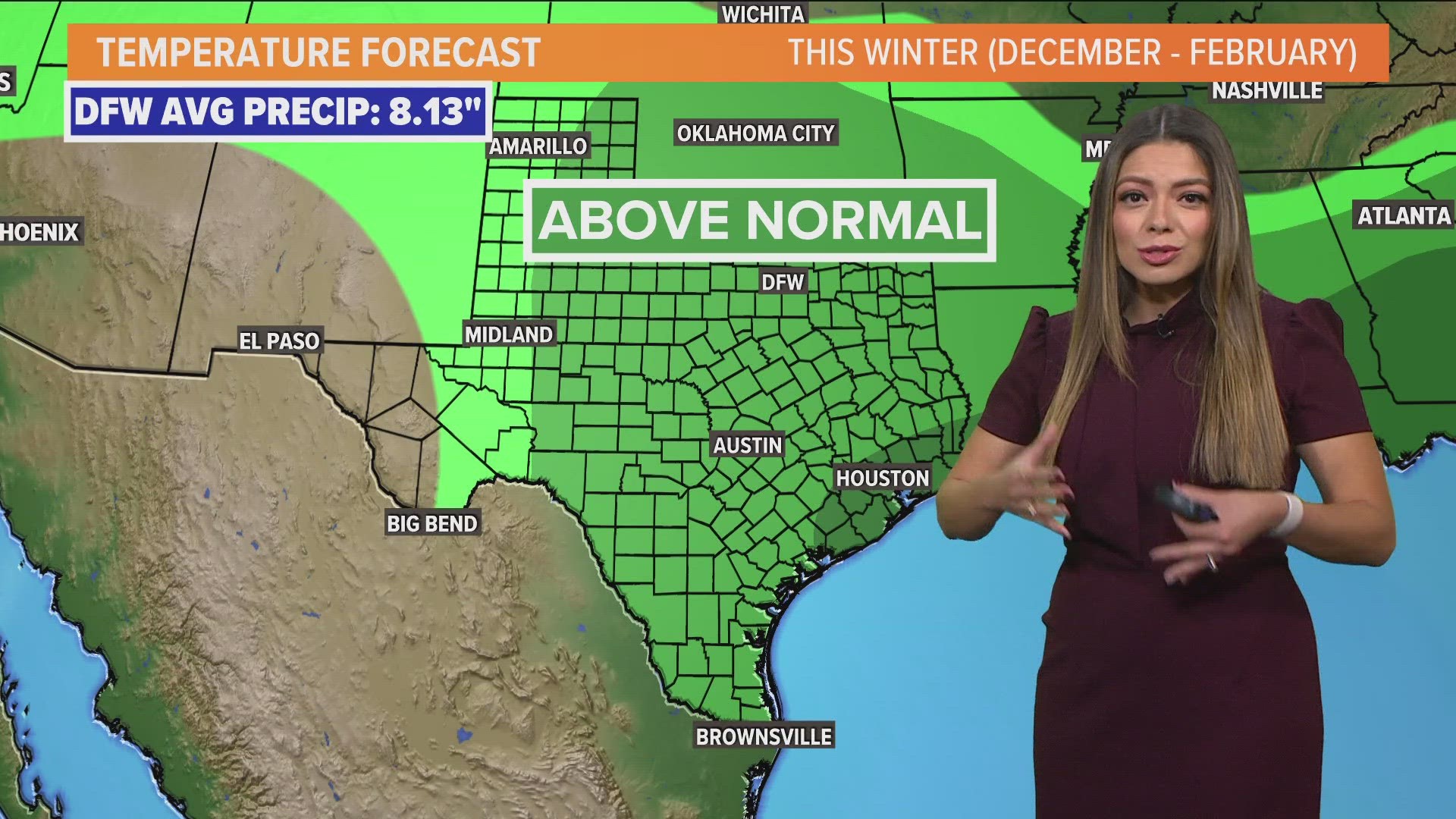DALLAS — We're getting more data about what the winter months could bring to North Texas.
The short answer:
The global pattern hints that North Texas will likely see a wetter-than-normal winter with temperatures that are near normal. An average winter will produce about 8.13 inches of rain with an average temperature of 48.3°.
Notice our average temperature is above freezing. This does not mean that we won't have cold snaps. It just makes them less frequent.




The longer answer:
Our winter weather outlooks rely on the water along the equator in the Pacific Ocean. This influences how our jet stream (a fast, narrow current of air flowing from west to east that drives weather) acts during the winter months.
The temperature along the Equatorial Pacific shows us a hint of how strong certain air currents are or are not. The temperature tells us if we are in an El Niño (warming of water along the equatorial Pacific) or La Niña (cooling of water along the equatorial Pacific) or neutral phase. The last three winters were influenced by a La Niña, but a shift was detected earlier this year.
This year, an El Niño is in place as we approach the winter months for the first time in four years. Generally, this pattern shifts our jet stream making our winters more active. A more active pattern means a wetter than normal and cooler than normal winter for the south.
Not only do we look at patterns based on El Niño, La Niña, or neutral conditions, but we also look at the strength of each to help determine an outlook for winter.
The top 5 snowiest winters happened during weak to moderate El Niño phases. However, the winters with "average" snowfall have all happened during (all phases) weak El Niño phases, strong El Niño phases, neutral phases, strong La Niña phases, and weak La Niña phases.
The last time we had an El Niño of similar strength was during the winter of 1997-1998. That winter ended up being the third-wettest winter on record with 15.22 inches of rain. No ice was reported with only a trace of snow indicating that temperatures were not cooler than normal. This doesn't mean that will be the case this time around, but looking at patterns helps to give an idea of what we have in store this winter.
As always, the weather is evolving and each week can look different. Be sure to stick with the WFAA Weather team. We can get through another winter together!
More weather coverage from WFAA:

